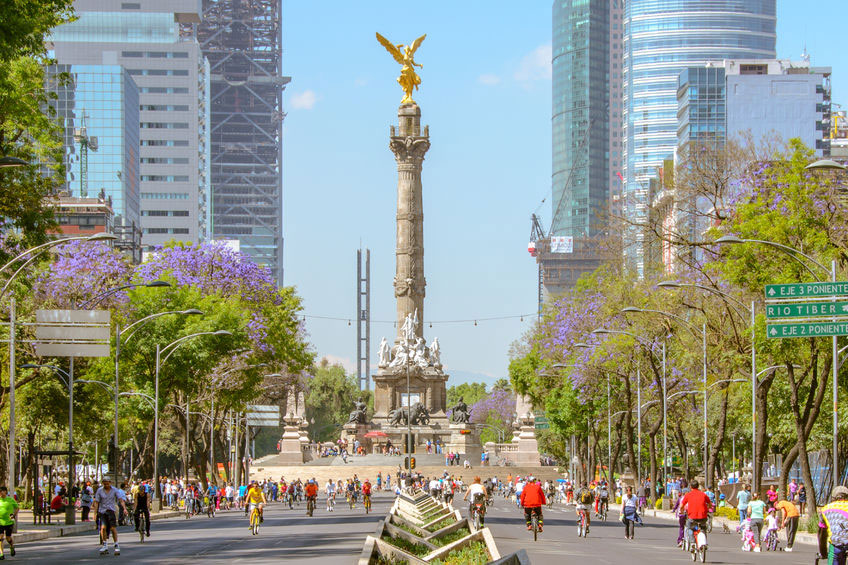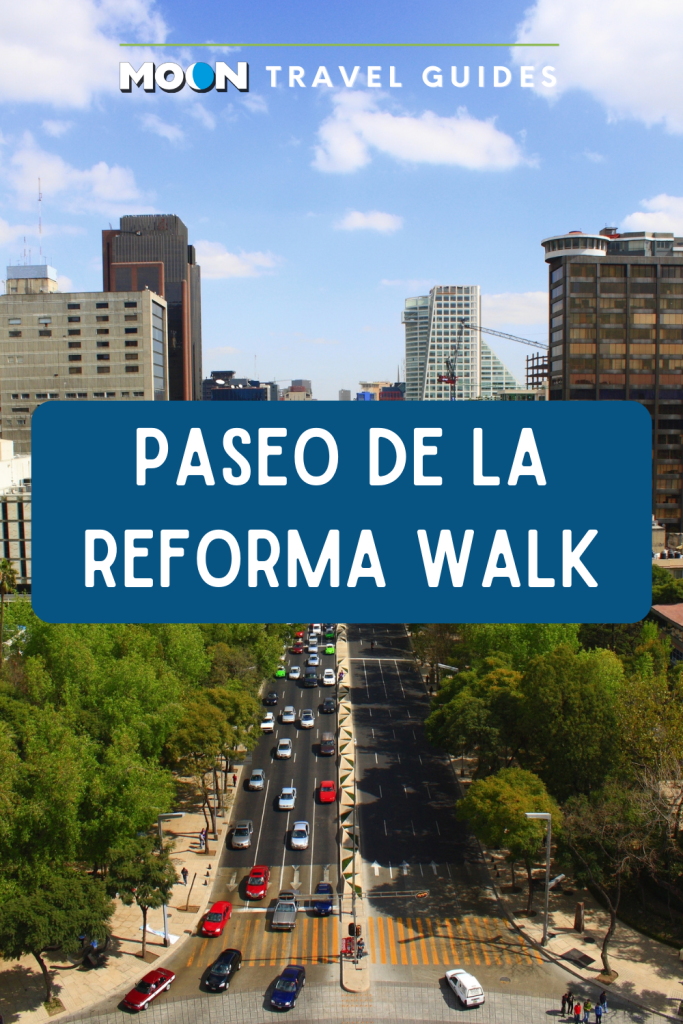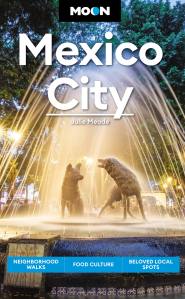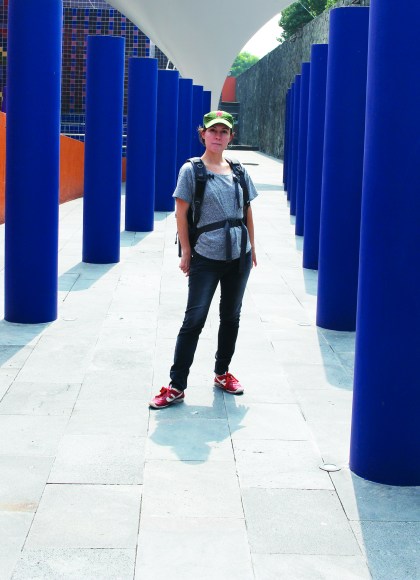A Walking Tour Along the Paseo de la Reforma

Total Distance: 3 kilometers (1.8 miles)
Total Walking Time: 45 minutes
The central stretch of the Paseo de la Reforma, which runs from the Centro Histórico through the Bosque de Chapultepec, is one of the city’s main thoroughfares. A wide, old-fashioned avenue designed to resemble the grand boulevards of Europe, it was first commissioned by Hapsburg emperor Maximilian and completed by President Porfirio Díaz at the end of the 19th century. Fashionable neighborhoods cropped up quickly along Reforma, and the avenue remains one of the city’s most exclusive addresses.
On Sundays, the avenue is closed to automobile traffic from 8am to 2pm, so it’s a wonderful time to take a stroll or rent a bike for a leisurely exploration of Reforma’s many monuments and public sculptures, from the Alameda Central to the main entrance of the Bosque de Chapultepec.
- Occupying the enviable address Paseo de la Reforma 1, the art deco Edificio El Moro—better known to many as La Lotería, the home of the national lottery—was inaugurated in 1945. This elegant skyscraper, with its strip of windows running up the front facade, was once the highest building in Mexico City. It suffered damage in the September 2017 earthquake, evident from the cracks in its facade, though the building remains in operation. Beside it, a statue of King Carlos of Spain originally marked the start of Reforma; it has been replaced by a giant yellow modernist interpretation of a king on horseback by sculptor Sebastián.
- About a half-kilometer west of La Lotería, the statue of Christopher Columbus atop the Monumento a Colón was finally removed in 2020 by head of government Claudia Sheinbaum following decades of protest from political activists and the sculpture’s frequent defacement. Going forward, the traffic circle will honor Indigenous women, with plans to install a replica of a pre-Columbian sculpture known as La Joven de Amajac in the place where Colón formerly presided.
- Walk another 500 meters west to the Monumento a Cuauhtémoc, which stands at the intersection of Paseo de la Reforma and Insurgentes. Cuauhtémoc was the last leader of the city of Tenochtitlan, who led the Mexica people in their final stand against the Spanish invaders in 1521 in Tlatelolco, just a few kilometers from this spot.
- The palm tree at the center of the next traffic circle, just west of Insurgentes, grew sick and was removed, with great fanfare, in 2022, after over 100 years on the spot. (There are photographs of the palm on Reforma in 1920.) It was replaced by an ahuehuete, a type of cypress native to Mexico and the country’s national tree. Northwest of the tree, you’ll see the mirrored Bolsa Mexicana de Valores, the home of the Mexican stock exchange, designed by architect Juan José Díaz Infante Núñez. This futuristic building is notable for its glassy, spherical entryway, joined by an unusual three-section skyscraper entirely covered in mirrors.
- Halfway up the block, the U.S. Embassy (blocked off by giant fences since 2001) is always thronged by visa applicants waiting for appointments. At the following intersection, one of the city’s most iconic landmarks, the Ángel de la Independencia, was erected by President Porfirio Díaz as a tribute to Mexico’s independence from Spain.
- At the westernmost glorieta (traffic circle) before Chapultepec, the circular fountain is topped by a statue of the Roman goddess Diana Cazadora (Diana the Huntress), constructed in 1942. Diana’s nudity created such a scandal that the sculptor, Juan Francisco Olaguíbel, was forced to add bronze undergarments. The bronze clothing was removed in 1967, in anticipation of the Mexico City Olympics in 1968.
- Just east of the main entrance to the Bosque de Chapultepec are four of the city’s fie tallest skyscrapers—the Torre Reforma, the Torre BBVA Bancomer, the Torre Mayor, and Chapultepec Uno, which was completed in 2019 and is home to a new Ritz-Carlton hotel. Just outside the park’s main entrance, the Estela de la Luz (Pillar of Light), is a 104-meter, quartz-covered tower commemorating Mexico’s 2010 bicentennial of independence from Spain and the concurrent centennial of the Revolution of 1910. Its construction was mired in controversy, first by going massively over budget and later for overshooting its September 2010 construction deadline by 15 months and missing the anniversary celebrations altogether. If you aren’t worn out, continue your tour through the Bosque de Chapultepec.
Related Travel Guide
Pin It for Later


